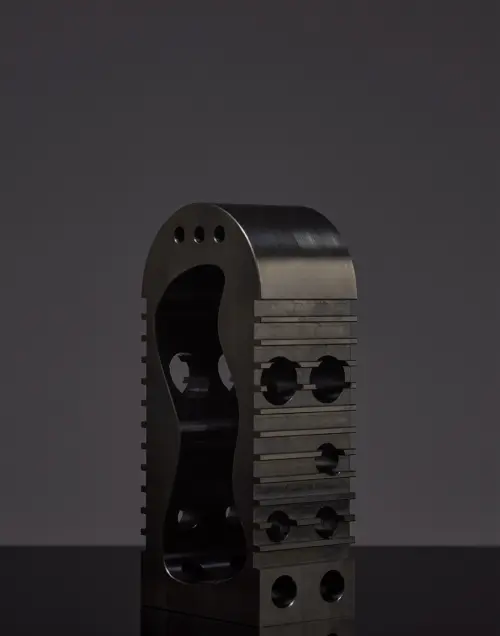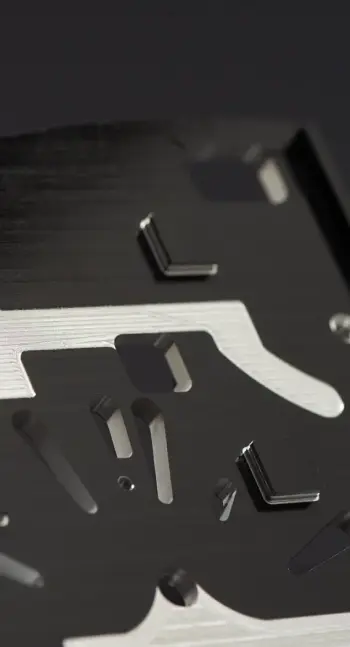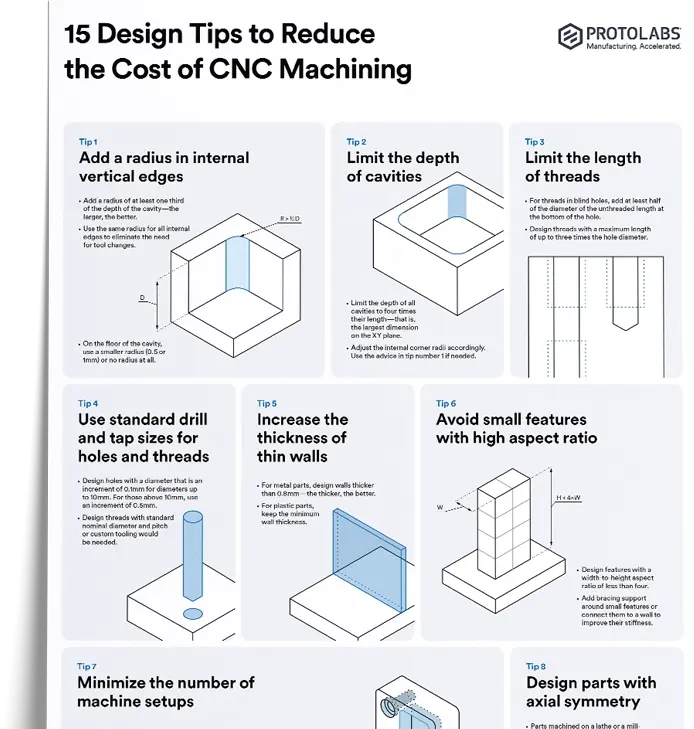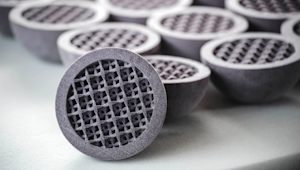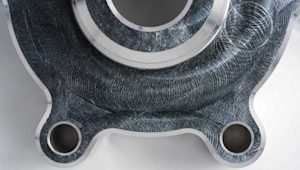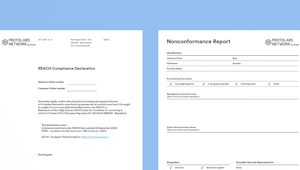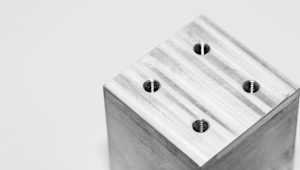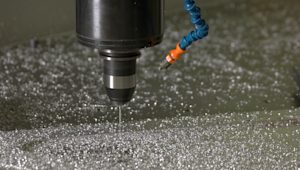When engineers need materials that won't buckle under pressure, bulk modulus is a predictive tool.
Imagine squeezing a tennis ball in your hand versus trying to compress a steel bearing. The tennis ball gives way easily, while the steel bearing hardly moves. This contrast in compressibility is what bulk modulus measures. For engineers, it’s a practical property that helps determine whether designs can withstand pressure without getting warped.
Bulk modulus quantifies a material’s resistance to uniform compression from all directions. Unlike other mechanical properties that focus on stretching, bending, or shear, bulk modulus tells you how much volume changes when pressure is applied equally on all sides. That makes a very important consideration in industries where components face high-pressure environments or need to remain dimensionally stable.
Understanding bulk modulus in material science
Bulk modulus is a measure of how hard it is to squeeze a material and change its volume. It’s determined by comparing the pressure you put on something to how much its volume shrinks. In other words, it shows how compressible (or incompressible) a material is. High values mean the material hardly compresses. Low values mean it squashes more easily under the same load.
For engineers, this matters because parts that look stiff at first might still compress under high pressure, which can lead to performance problems or even failures. Most metals have high bulk modulus values, while plastics and composites vary more, which is why choosing the right material depends on the demands of the application.
The bulk modulus formula and calculation
Understanding the math behind bulk modulus helps engineers turn theory into practical design choices. One common form of the formula is:
K = P / ε
-
K: Bulk modulus (Pa, MPa, or GPa).
-
P: Applied pressure.
-
ε: Volumetric strain (the fraction of volume change).
Volumetric strain is the change in volume divided by the original volume. Another way to write the formula is K = –V (ΔP / ΔV), where V is the original volume, ΔP is the change in pressure applied evenly on all sides, and ΔV is the change in volume. The minus sign shows that when pressure goes up, volume goes down.
Both equations show the same thing: how resistant a material is to uniform (hydrostatic) pressure.
Engineers measure this by applying pressure from all directions and recording the volume change. In practice, this is done with hydrostatic pressure chambers or, more indirectly, with ultrasonic testing that uses wave speeds to calculate elastic constants.
Units are expressed in pascals (Pa), the SI unit of pressure equal to one newton per square meter. For practical engineering work, larger units are used: megapascals (MPa, one million pascals) and gigapascals (GPa, one billion pascals).
Example calculation
An aluminum component sees a uniform internal pressure of 50 MPa. Taking aluminum’s bulk modulus K ≈ 70 GPa (70,000 MPa), the volumetric strain is:
ε = P / K = 50 MPa / 70,000 MPa = 0.000714 (≈ 0.071% volume reduction).
Notice how tiny this volume change is at less than one-tenth of one percent even under substantial pressure. This shows why metals like aluminum are considered nearly incompressible for most engineering applications.
Note: This calculation assumes uniform (hydrostatic) loading within the elastic range, and actual K values vary by alloy and temperature.
Quick reference ranges
-
High bulk modulus (>100 GPa): Metals for structural and pressure applications
-
Medium bulk modulus (2-10 GPa): Engineering plastics for moderate pressure environments
-
Low bulk modulus (<2 GPa): Flexible materials, seals, and gaskets
Typical values range from ~1 GPa for flexible polymers to ~440 GPa for diamonds. To learn more about how properties like bulk modulus guide engineering, see the CNC machining knowledge base and our collection of articles on manufacturing materials.
Bulk modulus vs. other elastic moduli
Now that we understand how to calculate bulk modulus, we can see how it compares to other material properties. Bulk modulus is one of three elastic constants used to describe stiffness. The other two are Young’s modulus and shear modulus.
| Property | What it measures | Example application |
|---|---|---|
| Bulk modulus | Resistance to uniform (volumetric) compression | Hydraulic seals, pressure vessels, tanks |
| Young’s modulus | Resistance to tensile stress (stretching) | Bridges, cables, beams |
| Shear modulus | Resistance to shear or torsional deformation | Gears, shafts, fasteners |
Engineers don’t look at bulk modulus in isolation. They consider it together with Young’s and shear modulus to get a full picture of how a material behaves. For tips on choosing the right mix of properties, see selecting the right CNC material.
Why bulk modulus matters in material selection
Engineers use bulk modulus data to choose the right material for the job. It tells them how a part will behave under pressure and helps spot where things might go wrong.
-
Dimensional stability: Components that must maintain precise dimensions under varying pressures require materials with appropriate bulk modulus values. Too low, and the part will deform. Too high, and you may end up paying for more performance than you need.
-
System compatibility: In assemblies where multiple materials work together, mismatched bulk modulus values can create stress concentrations or unexpected load distributions. Engineers have to balance these properties across all system components.
-
Performance prediction: Understanding how much a material will compress under load allows engineers to design with appropriate tolerances and safety factors. This keeps designs efficient without risking failure.
-
Cost optimization: Materials with very high bulk modulus are usually more expensive. Engineers aim for the most cost‑effective option that still performs well.
-
Manufacturing impact: Stiff materials may need more force to form, while softer ones can be easier to shape but harder to machine precisely.
Industries where bulk modulus is critical
Several industries depend heavily on bulk modulus considerations for safe, effective designs. Choose a material that compresses too much under pressure, and hydraulic systems leak, parts no longer fit together, or components crack under load. That’s why bulk modulus is a key consideration in:
-
Oil and gas: Deep-sea drilling equipment and pipelines face enormous pressures that require materials with predictable bulk modulus behavior.
-
Aerospace: Aircraft and spacecraft components experience significant pressure differentials across cabin systems, fuel tanks, and hydraulic components.
-
Automotive: Modern vehicles use high-pressure fuel injection systems, hydraulic braking components, and compressed air systems where bulk modulus determines material performance.
-
Marine engineering: Submarine hulls and deep-sea equipment represent the most demanding bulk modulus applications due to extreme water pressure at depth.
-
Medical devices: Implantable devices and surgical instruments often operate in pressurized environments where dimensional stability is necessary for patient safety.
-
Industrial machinery: Hydraulic systems in manufacturing equipment rely on materials with consistent bulk modulus properties to prevent system failures and maintain production efficiency.
Materials available through Protolabs Network
Protolabs Network provides a wide catalog of materials with reliable bulk modulus data, helping engineers select options for pressure-critical projects. Here is a condensed overview of the common categories.
| Technology | Material category / material | Bulk modulus (GPa) | Typical applications | Key notes |
|---|---|---|---|---|
| CNC machining metals | Steel | 160–180 | Structural, machinery | Common and strong |
| CNC machining metals | Aluminum alloys | 70–76 | Aerospace, automotive | High strength-to-weight |
| CNC machining metals | Titanium alloys | 100–110 | Medical, aerospace | Biocompatible, corrosion resistant |
| CNC machining metals | Copper | 130–140 | Conductive components | Excellent conductivity |
| CNC machining plastics | ABS | 1.5–2.0 | Automotive, consumer | Versatile engineering plastic |
| CNC machining plastics | Nylon | 2.0–3.0 | Gears, bushings | Tough, chemical resistant |
| CNC machining plastics | Polycarbonate | ~2.4 | Optical, safety | Transparent, impact resistant |
| CNC machining plastics | Acrylic (PMMA) | 2.0–3.0 | Displays, optical components | Optical clarity |
| CNC machining plastics | Polypropylene | 1.1–1.6 | Chemical processing | Lightweight, flexible |
| 3D printing plastics | PLA | 2.0–3.0 | General prototyping | Easy to print, biodegradable |
| 3D printing plastics | Nylon | 2.0–3.0 | Functional end-use parts | Tough and wear-resistant |
| 3D printing plastics | ABS | 1.5–2.0 | Prototypes, functional parts | Durable, common material |
| 3D printing plastics | PETG | 2.0–2.5 | Durable prototypes | Good balance of toughness and printability |
| 3D printing plastics | TPU | 1.0–1.5 | Flexible parts | High elasticity |
| Injection molding plastics | ABS, Polycarbonate, POM, PEEK, PP, PVC | ~1.5–2.5 | Automotive, medical, packaging | High-volume production capability |
| Sheet metal materials | Aluminum 5052 | 70 | Moderate-strength enclosures | Good formability |
| Sheet metal materials | Stainless steel 304 | 160–180 | Structural panels | Corrosion resistant |
| Sheet metal materials | Copper C110 | 130–140 | Electrical applications | Excellent conductivity |
| Ceramics (custom options) | Aluminum oxide | 250–280 | High-wear parts | Very brittle, extreme hardness |
Bulk modulus values are approximate. They vary with grade, additives, and processing method (for example, bar stock vs. filament vs. molded parts). Download our data sheets for exact numbers.
For precision applications, you can also choose specialized or custom materials through our CNC machining, injection molding, and 3D printing services. Need a material that’s not on the list? We have hundreds more available by request. Just send your requirements to network-sales@protolabs.com.
Advancing your materials knowledge
Understanding bulk modulus represents just one aspect of comprehensive materials engineering. Our material guides help engineers incorporate bulk modulus considerations into their design processes.
Key resources:
-
CNC machining materials guide: Download a free poster showing a side-by-side comparison of the strength, price and application for CNC plastics and metals.
-
Material selection guide: This article compares the 25 most common materials used in CNC machining and helps you choose the right one for your application.
-
Material comparisons: Weigh the benefits and drawbacks of titanium vs. aluminum, copper vs. titanium, and polycarbonate vs. acrylic.
-
Process guides: Explore how materials perform across different technologies in our overviews of 3D printing materials and chemical-resistant materials.
Get started with your next project
Need a material that holds up under pressure? Upload your CAD file to get a free, instant quote.
Get started with your next project
Need a material that holds up under pressure? Upload your CAD file to get a free, instant quote.
Frequently asked questions
What’s the difference between bulk modulus and Young’s modulus?
Young’s modulus measures resistance to stretching, while bulk modulus measures resistance to uniform compression. Both are used in material selection.
How does temperature affect bulk modulus?
Bulk modulus generally goes down as temperatures go up. For an overview of materials that remain stable at higher temperatures, check out our heat-resistant plastics guide.
What’s the relationship between bulk modulus and compressibility?
Bulk modulus and compressibility are inverses. High bulk modulus = low compressibility.
Is bulk modulus the same as volume elasticity?
Yes, volume elasticity is another term for bulk modulus.
What’s the bulk modulus of water?
Water has a bulk modulus of ~2.1 GPa. Even under the extreme pressures found at the deepest parts of the ocean (about 100 MPa), water compresses by less than 5%. This resistance to compression is why engineers usually treat liquids as incompressible in most calculations.
How does bulk modulus relate to atomic structure?
Materials with strong atomic bonding and dense packing typically have higher bulk modulus values, which provides insight into alloy design, since adjusting atomic arrangement and bond strength can impact compressibility.

